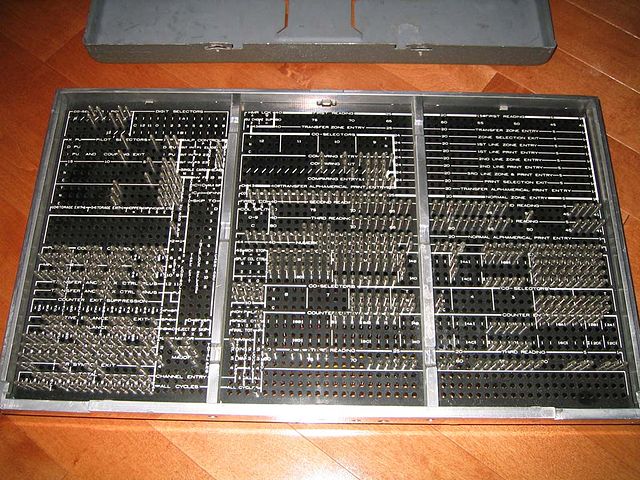The IBM 604 Electronic Calculating Punch was the world's first mass-produced electronic calculator along with its predecessor the IBM 603. It was an electronic unit record machine that could perform multiple calculations, including division. It was invented and developed by Ralph Palmer, Jerrier Haddad and Byron Phelps. It was introduced by IBM in 1948.
IBM 604 as part of IBM CPC assembly
IBM 604 Electronic Calculator at NEMO national science museum in Amsterdam. Note plugboard control panel used to program the 604, at bottom.
IBM 604 vacuum tube modules
A plugboard or control panel is an array of jacks or sockets into which patch cords can be inserted to complete an electrical circuit. Control panels are sometimes used to direct the operation of unit record equipment, cipher machines, and early computers. The array of holes is often contained in a flat removable panel that can be inserted into a machine and pressed against an array of contacts. This allows the machine to be quickly switched between different applications.
IBM 402 accounting machine control panel wiring. This board was labeled "profit & loss summary."
Reverse side of the same 402 plugboard, showing the pins that make contact with the machine's internal wiring. The holes were called hubs.
An operator inserting a control panel into an IBM 407 Accounting Machine Another panel is on the floor nearby.
An 80-column punched card. Rows 0 to 9 are labeled. The 12 row, on top, has one punch in column 7. The 11 row, below it is not punched on this card. As cards passed through a read station, usually 9-edge (bottom edge) first, wire brushes, one for each column, would make contact through the holes.







